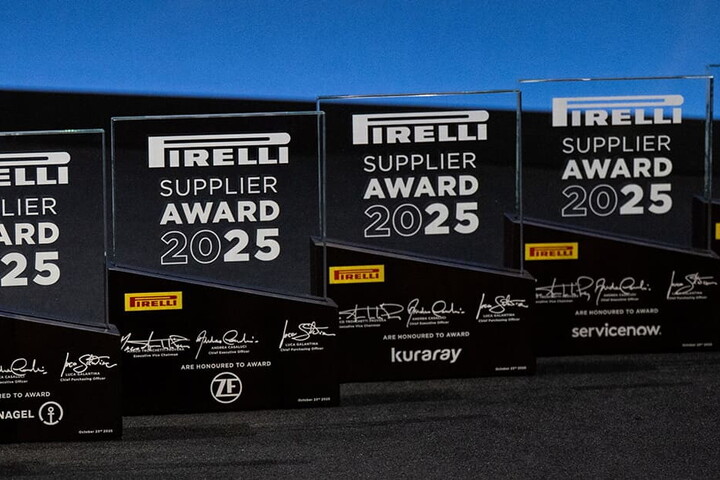“A Beautiful Place. The Art of Manufacturing”. This is the title of Pirelli's Annual Report for 2021 to celebrate the factory, as a beautiful place capable of inspiring art. Pirelli asked some artists to visit its production plants, to observe them and draw inspiration from them, to create works that would reflect their characteristics and tell their stories.
This is how this project came to be, a travelling journey between Brazil, China, Italy, Romania and the United States, which has enabled us to discover what it is that it brings together factory and beauty, creativity and genius. The answer to this question is material, as indicated by Vito Mancuso, a philosopher and theologian, in his essay “Manufacturing and Beauty” which he wrote for Pirelli and which serves as an introduction to the volume.
Giovanni Mengoni, Susy Garcia, Penguim, Fernanda Broggi, Tony Felix, Lisette Correa, Andrei Cavassi and Tu Yonghong: these are the names of the artists involved and who visited Pirelli's plants in Italy, Brazil, the United States, China and Romania respectively. The origin of each individual emphasised the specific attributes of each one, linking them to the territory of the respective manufacturing plant and its production.
The works of art commissioned, which all differ in language and instruments, speak of time in the factory, capturing its sounds and describing its dynamics, seeking beauty in the material and in its transformation process.
Right from the very title, The garden of time, it seems clear that the story of the factory told by Giovanni Mengoni rotates around the time dimension: ceramic – an ancient material with a craft-based technique – is connected to the skilled production of one of Pirelli's most technologically advanced plants, the one in Settimo Torinese, in a game of contrasts that highlights the ability of the brand to last decades, adapting and innovating. The same production plant, which is the subject of the shots taken by the photographer Alessandro Scotti which make up the portfolio that ends the Annual Report.
In Brazil in Campinas, Sao Paulo, the artists Susy Garcia, Pinguim, Fernanda Brogg and Tony Felix composed a song, Un Lugar Bonito, which tells of a beauty and inspiration hidden in the space that is frequented the most every day. The factory also produces racing tyres and the typical sound of the tyres on the asphalt surface seems to resonate in the notes and melody of the piece.
The US plant in Rome, Georgia, instead became the canvas for the series of graffiti entitled Your Journey Starts at the Hands of Pirelli by Lisette Correa: the impressions made by the tyres are transformed into hands that tighten, in order to emphasise the centrality of the human dimension also in this factory, although it is entirely robotised. Indeed, the objective, according to the artist herself, is to immerse the entire staff in an atmosphere of light and colour. Of beauty.
For the Slatina factory in Romania, Andrei Cavassi chose to compose a classical music piece, A Beautiful Place, which investigates the relationship between music and technology. These two worlds in fact share the same pursuit of excellence, sustained by creativity and the desire to innovate, as the artist explains.
Industry and innovation: this is the title of the two engravings on paper that the artist Tu Yonghong created, inspired by the production plants in the Shandong region. The tradition of a thousand-year practice – i.e. paper cutting – meets the technological research that Pirelli is putting into practice in China, depicting the delicate balance between the past and the future that represents it.
The project ends with the story Giocare alla fabbrica (Playing factory) by the Armenian-American and Ghana writer Nadia Owusu: a reminiscence of the hours spent with her sister to compose and decompose toys, specifically playing factory. It was the best game, because it allowed us to see “the potential and even the beauty, of what we had started.” Manufacturing and beauty come together, yet again.




